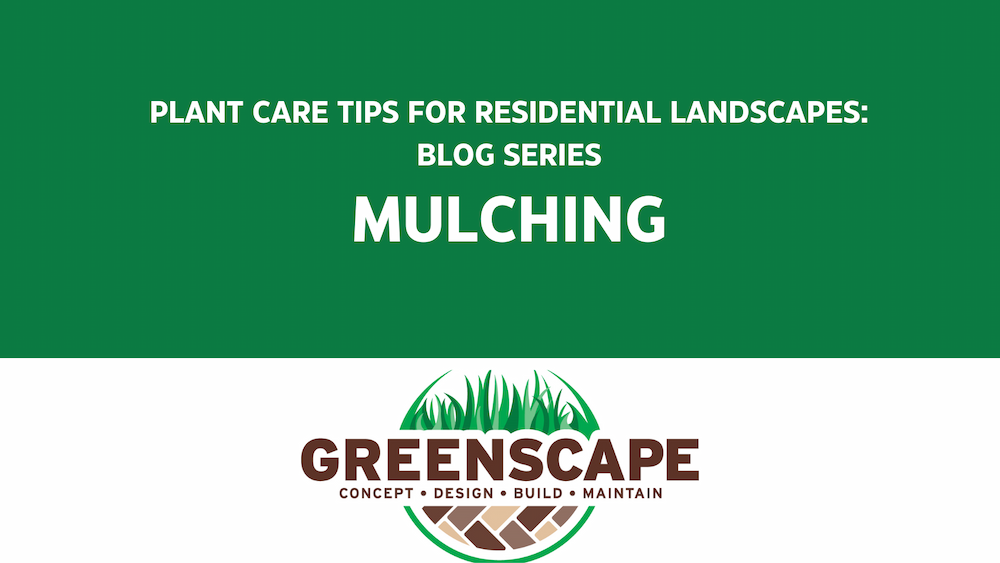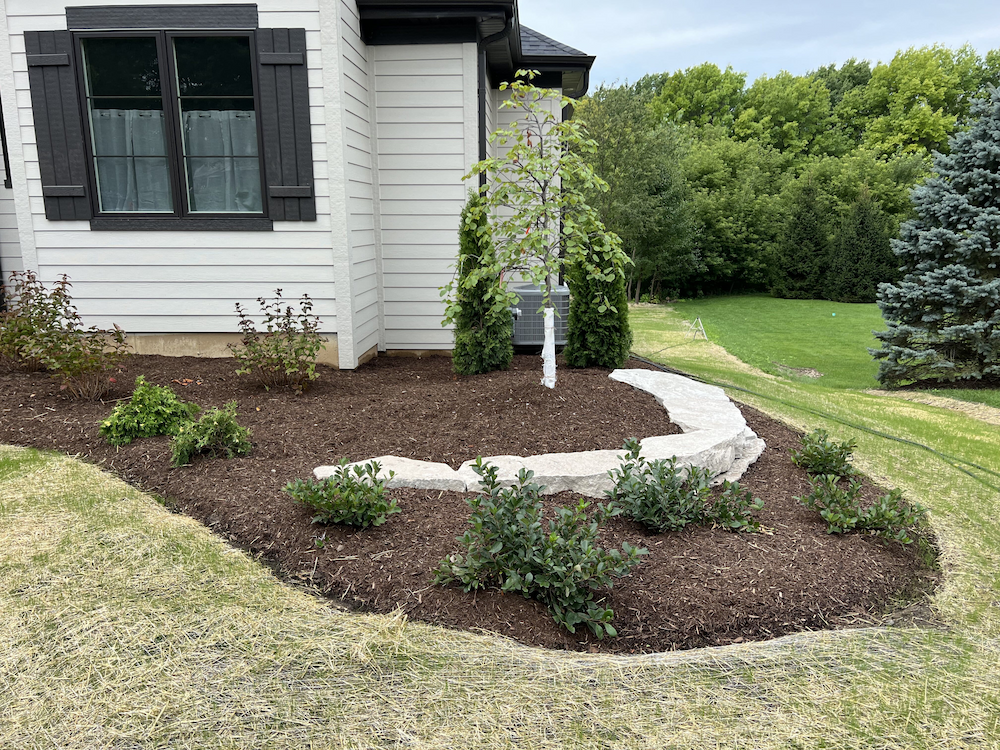In our previous blog, we shared some best practices when Watering for Maturing Landscapes, along with some helpful suggestions on the subject of weed control. In Part 3 of our Six-Part Blog Series, we’ll provide you with some beneficial information on what types of mulch to use in specific situations to ensure landscaping success.

Mulching is an important cultural maintenance item in maintaining healthy plantings and reducing water demands as well as weed growth. When we installed your landscaping, we first applied pre-emergent weed control to all of your planting beds, followed by a 2-3” thick blanket of premium shredded hardwood bark mulch. We recommend an annual reapplication of mulch to help retain moisture, reduce weed occurrence and add organic matter to your planting beds. The various types of mulch we suggest are explained below.
- Shredded Hardwood Bark. We use a premium quality shredded double processed 100% shredded hardwood bark mulch product as our standard for bed applications. This premium product contains no wood fillers and is steam treated to kill weed seeds before it ever arrives at your home. It has a rich dark brown color that slowly fades to a gray-brown as it decomposes.

- Mushroom compost. This high quality mulch is our standard bed amendment product and is also a beneficial mulch for perennial beds and landscape beds where plant health is prioritized over aesthetics. Mushroom Compost is a blend of composted straw, horse manure and supplemental nutrients. The high nutrient values are excellent for inducing plant growth and health, while structural characteristics are ideal for loosening and improving heavy soils.
- Leaf mulch. This is the product for those who value a minimalist impact on the environment far above aesthetics. Leaf mulch tends to be rough in texture and appearance but it is completely recycled material and helps restore soil structure, aeration and humus content.

- Combination mulches. There are numerous combination mulches on the market to cross the benefits of different materials. While we typically apply single ingredient mulches, combos and bark and leaf matter and/or bark and compost have their applications in some settings.
Important note on fungus in mulched beds. We field numerous calls a year about various forms of fungus growing in mulch beds. Fungal organisms thrive in areas of decay, therefore mulched planting beds are like a buffet line for fungus. Do not be alarmed when you see various mushrooms, yellow sludge, etc. in your beds. These are a normal as your mulch decomposes into organic matter in your planting beds.

As you just learned, mulching is an important cultural maintenance item not only for
preserving healthy plantings, but also for conserving your usage of water, which becomes particularly demanding when weeds are an issue.
